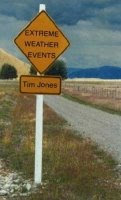There are good things and bad things about being an author who works in more than one format. On the downside, it takes longer to get any individual project finished. But on the upside, when I’m feeling blocked on one piece of writing, I can always work on another.
This past week, having temporarily worn myself out on my novel revisions, I’ve been doing some more work on the poetry collection I’m putting together, which I’m calling Men Briefly Explained.
The sticking point, which it’s taken me quite a while to resolve, is what order to put the poems in, and how (if at all) to divide them into sections. There may well be well-organised people out there who work out the order of their poetry collections, or short story collections, before they sit down to write a word – and I’d be interested to hear if you’re one of them – but for me, the idea for a collection emerges from looking at what poetry I’ve been writing and what I think I’d like to focus on writing next.
I’m looking for two, partially contradictory, things when sequencing a poetry collection: a flow from one poem to the next, and some division points which allow poems with similarities to be grouped together. If possible, I like the overall shape of the collection to have some kind of arc, to suggest a narrative.
My original idea was to divide the manuscript into four sections (and, off the record and on a strictly “need to know” basis, these were I: Men In The Wild; II: Men in Love; III: Men Under Construction; IV: Men Overboard). But the more I looked at this division, the more unsatisfied I felt. Where was the flow, where was the arc?
So, after a lot of hemming and hawing over the section titles, I decided to start from scratch and re-sequence the whole thing, on the entirely unscientific basis of which poems felt like they belonged early, middle, and late in the collection. Within these, divisions emerged, rather like the points of a compass rose, so that poems acquired designations such as “early middle” and the even more problematic “early late”. Then, put them all together, et voilà! A reordered poetry collection.
Now the love poems are up the front, followed by the “growing up” poems. The wild men, and indeed a number of the tame men, cluster around the middle of the collection, while the late period charts the long decline towards senescence, with occasional excursions to Haast. (I may still move the excursions to Haast.)
There’s still plenty of work to do. Some of the poems, especially those previously published in literary magazines, are finished – I think; some are fairly stable, but still need some tidying up; while others are rough drafts with encouraging little notes to myself like “more stanazas here!” This instruction should probably be removed from the final version.
When it comes to the age of the poems, there’s a bimodal distribution – almost half of them are three or more years old, and have had a fair crack at being submitted to literary magazines, while most of the other half have been written within the last few months. The poems in this latter half deserve their chance at individual glory too.
Somewhere down the track, I have a third short story collection in mind. Daringly, I’ve already come up with the theme and most of the story titles, if not the order. Whether this will encourage me to actually write the stories remains, as yet, unknown.


